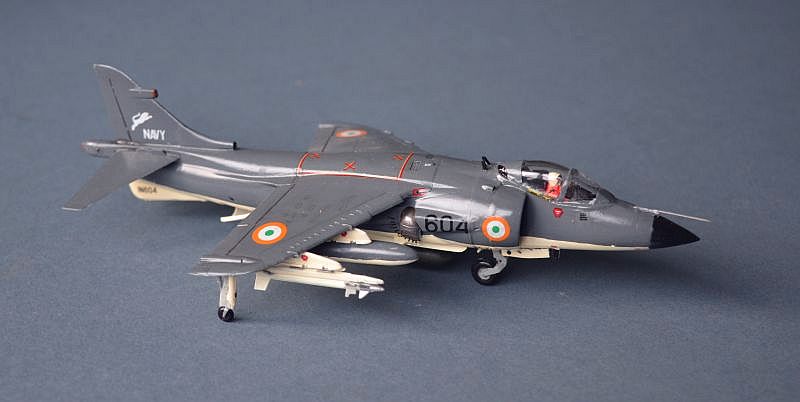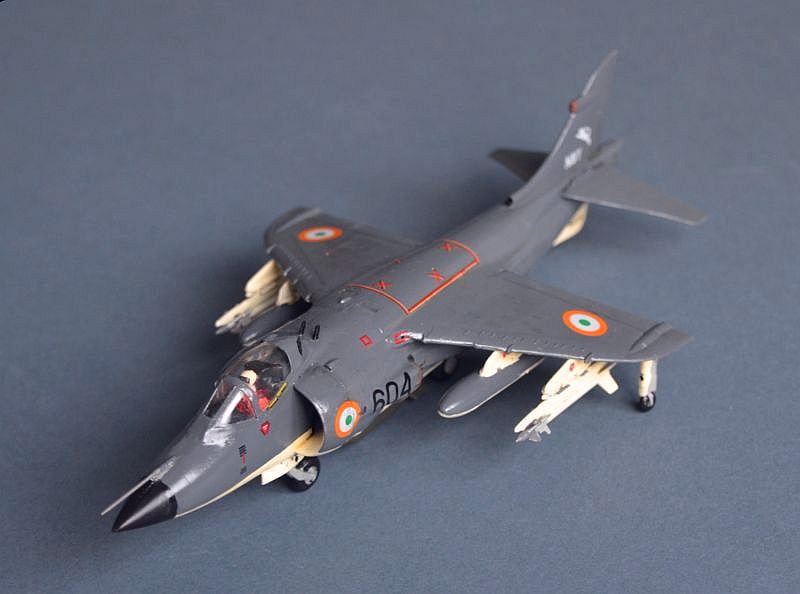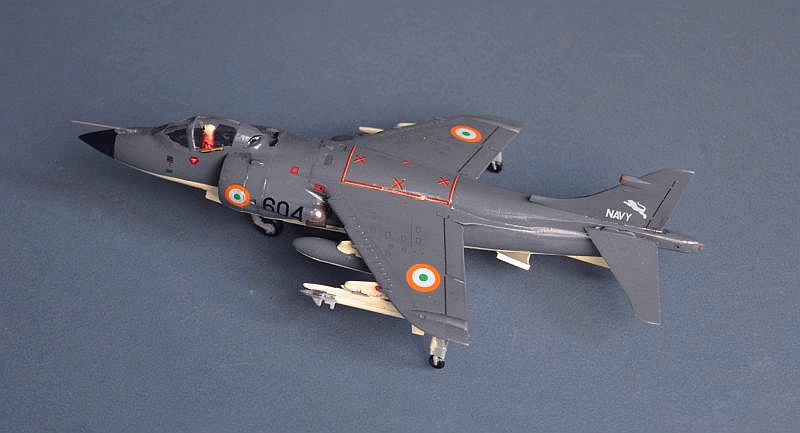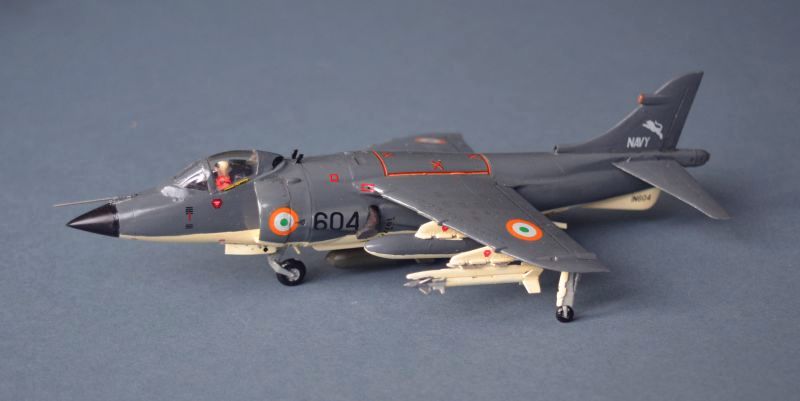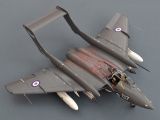May 2021 Part 1
HMS HERMES / INS VIRAAT
Sea Harriers -
Sea Harrier FRS.1
800 Sqn, HMS HERMES, Western Approaches, May 1981 -
ESCI 1/72 , with scratch modifications and Sky decals.
The first Sea Harriers to serve at sea were 800 Sqn in 1980, initially onboard HMS INVINCIBLE, but quickly moving in 1981 to the newly refitted HMS HERMES with her steeper ramp, much larger deck and bigger hangar. Until the start of the Falklands war in 1982, when everything was toned down to shades of grey, the aircraft wore the traditional RN post war colour scheme of dark sea grey and white.
This aircraft also carries two AIM-
Building the ESCI Sea Harrier Kit:
ESCI’s 1983 initial issue of a superb Sea Harrier kit was very timely, allowing them
to include Falklands decals for 800 Sqn in HERMES and for 899 immediately post-
Even now, nearly 40 years later, this is one of the very best small 1/72 models available, of any type of aircraft, accurate, well engineered and easy to build, with subtle engraved detail. Its only real faults are the wrong type of ejector seat, a tendency for one of the air intakes not to fit evenly, and the difficulty in getting all of the wheels to touch the ground at once (an issue shared by all SHAR kits!).
It has been issued in Airfix, Revell and most recently Italeri boxes, all with different decal options, all of which are strongly recommended. With a suitable resin conversion set (of which there are a few), it is also the best option for those wanting to build an accurate FA.2 Sea Harrier model.
In 1987 I watched HERMES depart Devonport under a new flag, that of the Indian Navy. As the INS VIRAAT (pennant number R22), she would go on to serve India with the same pride and success that marked her time with the Royal Navy, until she was finally decommissioned 30 years later.
Sadly, 2021 marks the definite last chapter for this proud ship as she sits on a muddy beach being dismantled for scrap. Attempts to save her as a museum have been unsuccessful, mainly because of her poor material state; after all, it is now 77 years since her keel was laid down in Barrow by Vickers Shipbuilders, in the midst of a long past war.
Over that remarkably long operational life, HERMES/VIRAAT saw many new guises, operating
some of the first jet aircraft as a strike carrier, then helicopters in the commando
assault role, then helicopters in the anti-
This month, I present a project that I have been working on since Christmas, to increase the number of HERMES (and VIRAAT) aircraft in my model collection.


2021 marks 40 years since I joined my first proper ship as a Royal Navy Officer. HMS HERMES (pennant number R12) was just completing a refit that had seen a large “ski jump” ramp fitted, allowing her to operate the new British Aerospace Sea Harrier FRS.1. HERMES was widely known as “The Happy H” and that accords fully with my memories.
I was there when the first Sea Harrier left the ramp, a real treat for someone with my enthusiasm for aircraft and especially Naval Aviation. I was also there in 1981 when the government of Margaret Thatcher announced she would be sold (along with HMS INVINCIBLE), as part of plans to slash the size of the RN, including withdrawal of the South Atlantic Patrol Ship, HMS ENDURANCE.
In Argentina, the withdrawal of ENDURANCE and wider RN drawdown was interpreted as a clear message of British weakness; fast forward 1 year and both HERMES and INVINCIBLE would be in that South Atlantic, fighting an unexpected and bitter war in the worst of weather conditions, 5,000 miles from home, without the promised RAF air cover, that would define her career and make her one of the most famous aircraft carriers in the world.
Although I left the ship in August 1981 to begin an engineering degree, so did not serve in the South Atlantic, a great many of my friends did. Like many others, I followed her progress every day and still remember the massive cheer that went up across the whole of the South West when the BBC’s Brian Hanrahan reported HERMES’ first raid on the islands: "I'm not allowed to say how many planes joined the raid, but I counted them all out, and I counted them all back."
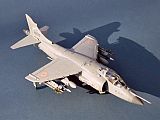
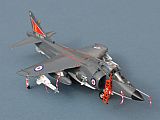
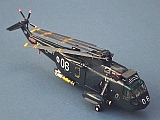
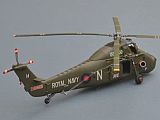
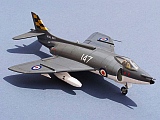
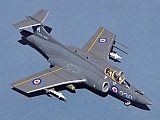
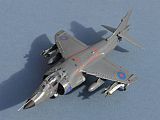
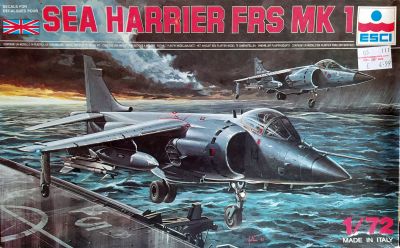
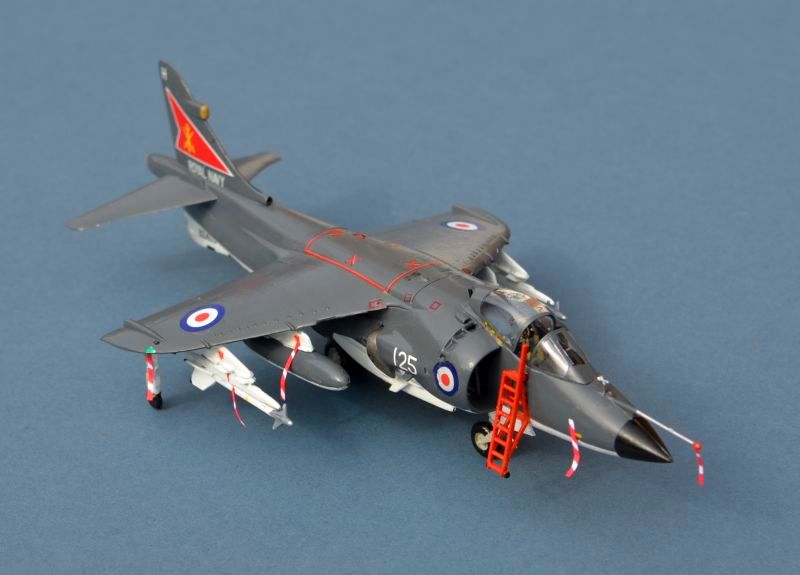
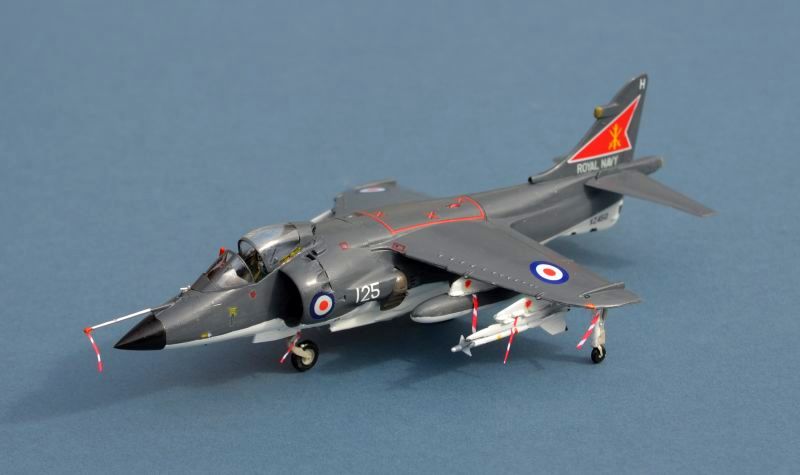
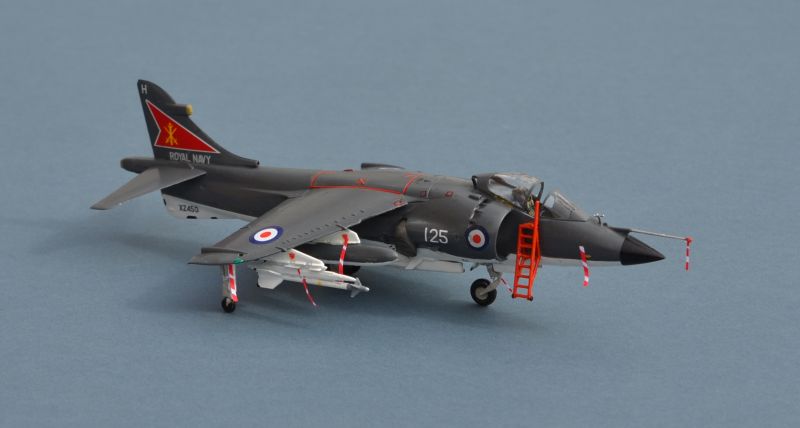
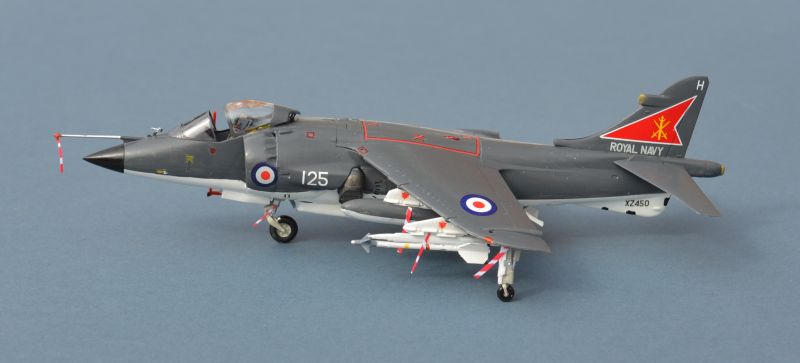
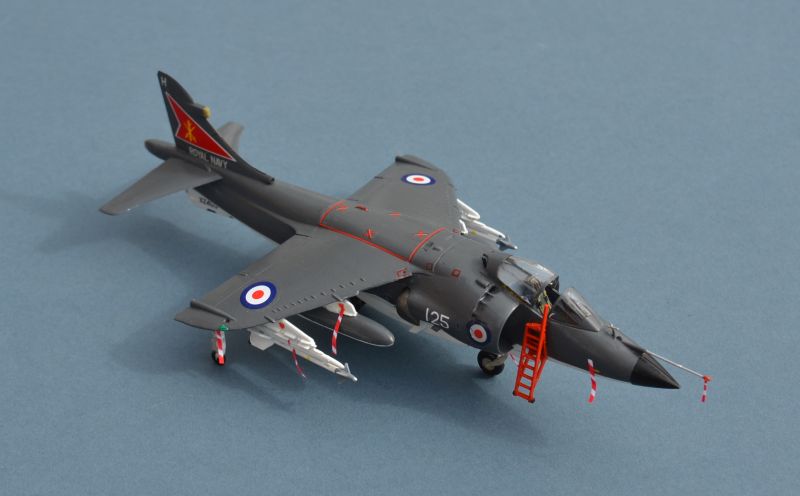
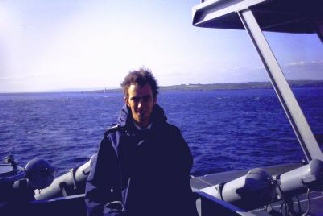
Click on the thumbnails to take you to each model:
On HERMES’ island in the days when I had hair!
Whilst kits of her aircraft types are relatively easy to source, for some unexplained reason, the markings of HERMES’ squadrons were rarely the most colourful or interesting, with the result that very few decal sets have been produced for them.
I have done my best and alongside my 2021 builds, I have included some much older models of HERMES aircraft.
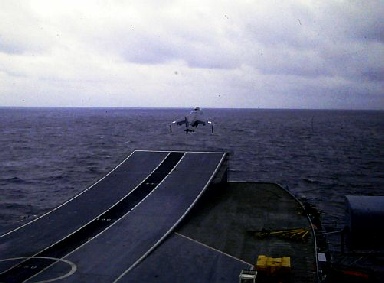
1981 and the very first Sea Harrier launch from the new ramp.
The subject of this model is Sea Harrier XZ450, which was flown from HMS HERMES during
the Falklands War by Lieutenant Nick Taylor RN. His aircraft was shot down by Argentine
anti-
Lt Taylor was buried by the Argentine Forces with full Military Honours in a grave
at the edge of Goose Green Airfield. ![]()
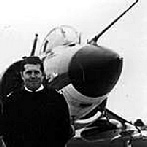
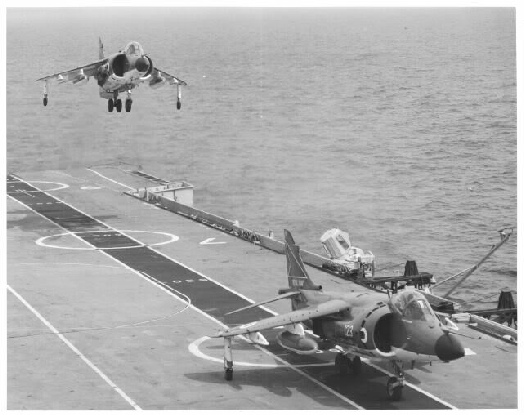
Right: May 1981 and 800 Naval Air Squadron embark on the newly refitted HERMES for the first time, to work up in the Western Approaches. (Picture by Ship’s Photographer)
Below: April 1981. An aircraft from Boscombe Down undertook the very first launches from HERMES’ ramp, before 800 Sqn were cleared to embark.
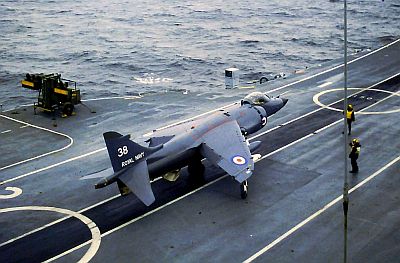
300 “White Tigers” Indian Naval Air Sqn, INS VIRAAT, May 2016 -
Fujimi 1/72 , with scratch modifications and decals from various sources.
The very last Sea Harriers to serve at sea were those of INS VIRAAT, flown by 300
Indian Naval Air Sqn, onboard the INS VIRAAT. Initially flying from the older Indian
Carrier, INS VIKRANT, a number of Indian Navy Sea Harriers were updated in the early
2000s with help from Israel, to carry a modern pulse doppler radar from Elbit and
the Derby Beyond Visual Range (BVR) air to air missile alongside their existing MBDA
Magic R550 short range missiles. Sadly, their days were numbered and as the VIRAAT
was decommissioned in 2016 and the Indian Navy received its new MiG-

Above: © IWM CT410 HERMES at sea pre-
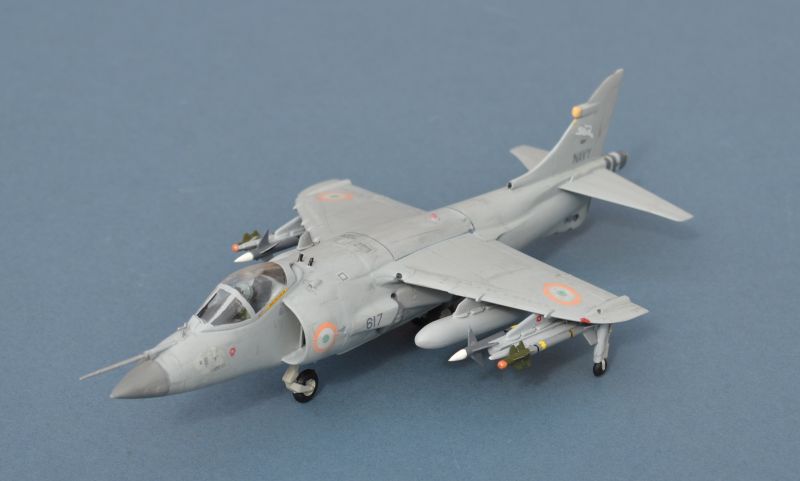
Building the Fujimi Sea Harrier Kit:
Fujimi’s Sea Harrier kit first appeared in 1983, and like the ESCI kit, it has many
sprues in common with their AV-
There are 3 main issues, driven by the desire to make the mould interchangeable
between Harrier variants. Fujimi are not the only manufacturer to do this, but their
solutions seem sub-
Firstly the wing undersides have inserts to accommodate the different pylon layouts. These inserts are chunky and poorly fitting. Fortunately they are barely visible once completed, but fairing them in nicely is not an easy job and will need filler. This is pure and simple bad mould design and engineering.
Secondly, the fin/rudder is a separate part (fairly normal) however it has a vertical butt join 1/3 way along the fin. I'm not aware of any variant differences in the part ahead of that, so why? Again, very difficult to hide, especially as the fuselage is thicker than the fin part. Filler and heavy duty sanding are unavoidable.
Thirdly and by far the worst of all, the forward fuselage is a separate assembly (so far so normal), but unlike every other Harrier kit manufacturer, who place the joint inside the intake area (where it can't be seen), Fujimi have chosen a butt joint on the fuselage, about 6mm aft of the intake joints (which are themselves not a good fit). No matter how careful you are, the two profiles, forward and aft fuselage assemblies will not meet accurately and once more, filler will be needed, possibly with rescribing of the engraved detail that you will remove.
Having roundly criticised the kit, II have to be fair and point out that, these issues apart, it is a nice kit, with a shape that looks correct and good detail. I would still rate it the second best Sea Harrier kit available.
For conversion to a LUSH Sea Harrier, all that I did was build the slanted double pylons and two Derby missiles from sprue and plastic card. The Matra/MBDA R550 Magic missiles come from Italeri and the decals are largely from an Italeri SHAR kit. The Indian script on the starboard fin was achieved using clear deal paper and an Indian Ink pen (and a lot of trial and error!).
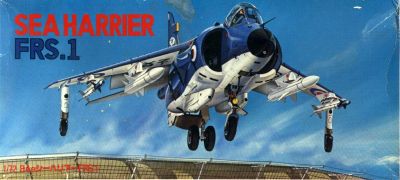
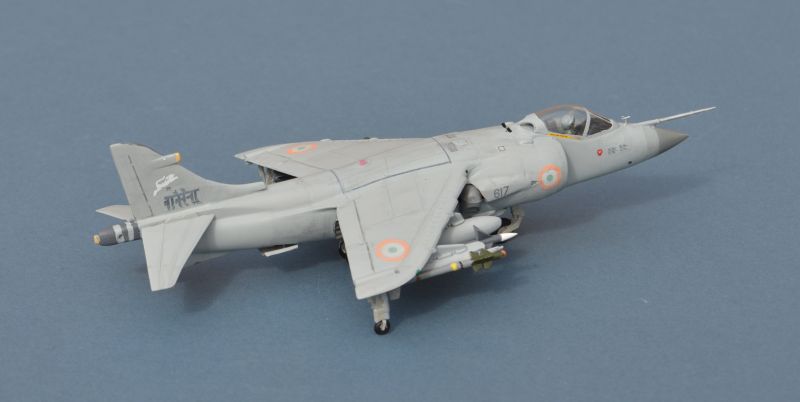
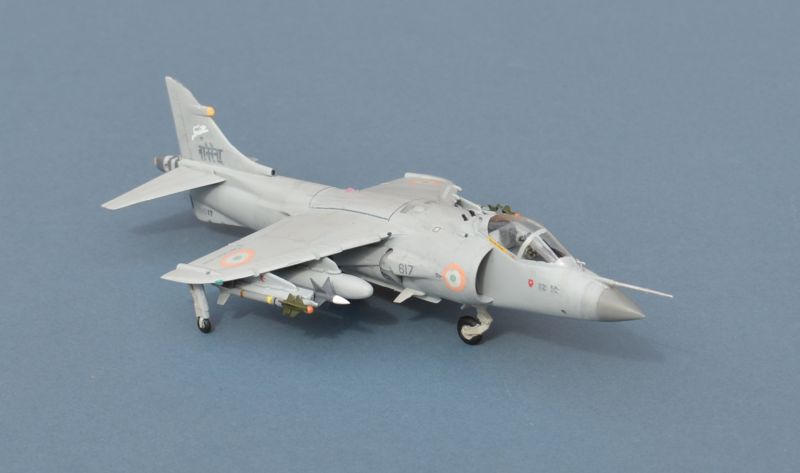
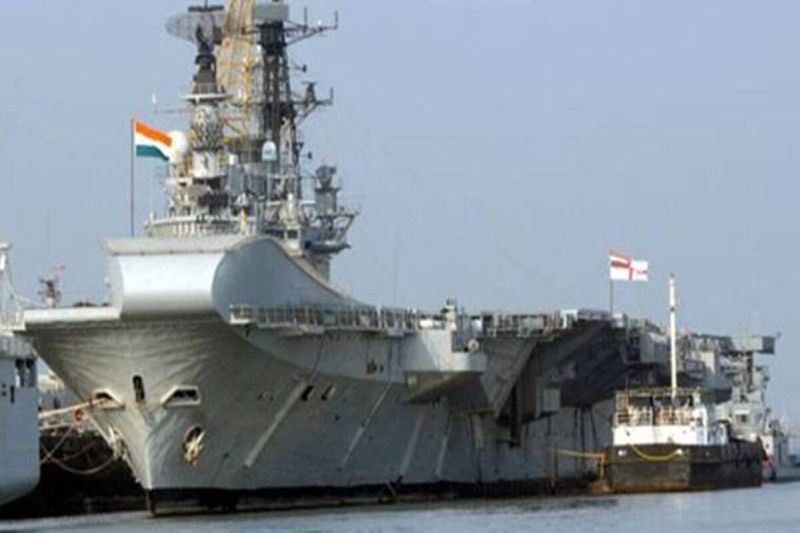
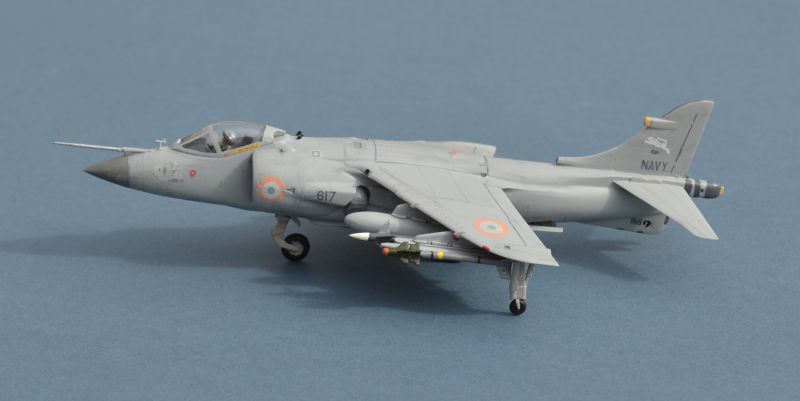
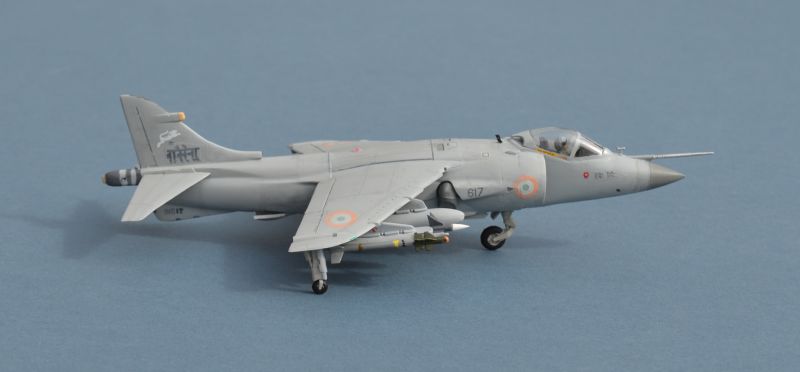
Above: INS VIRAAT, flagship of the Indian Navy, sits proudly alongside in her home port of Mumbai.
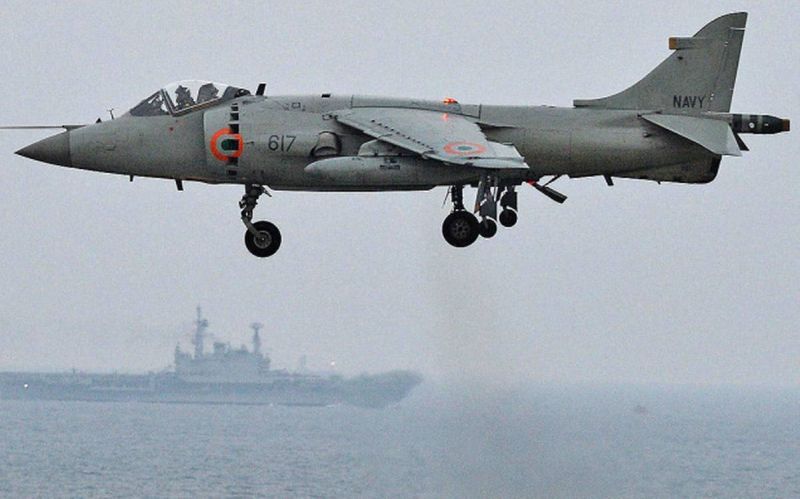
Images and text © www.gengriz.co.uk unless otherwise noted
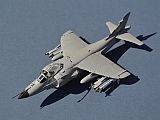
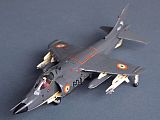
Sea Harrier FRS.51
300 “White Tigers” Indian Naval Air Sqn, INS VIRAAT, 1987 -
Fujimi 1/72 , with scratch canopy and Italeri decals.
This is one of my older model builds, reflecting an Indian SHAR from the VIRAAT in the late 1980s. The initial delivery of Indian Sea Harriers took place in 1983, with the aircraft embarking on the existing Indian Navy Carrier, INS VIKRANT to replace Hawker Sea Hawks.
With the arrival of INS VIRAAT in 1987, the Sea Harriers transferred to her although they remained capable of operating from VIKRANT in an emergency.
VIRAAT’s first SHARs differed from the RN’s in their main armament, with the Matra R.550 Magic replacing the Sidewinder. Although delivered in this EDSG and white scheme, they were quickly toned down to an overall air defence light grey.
